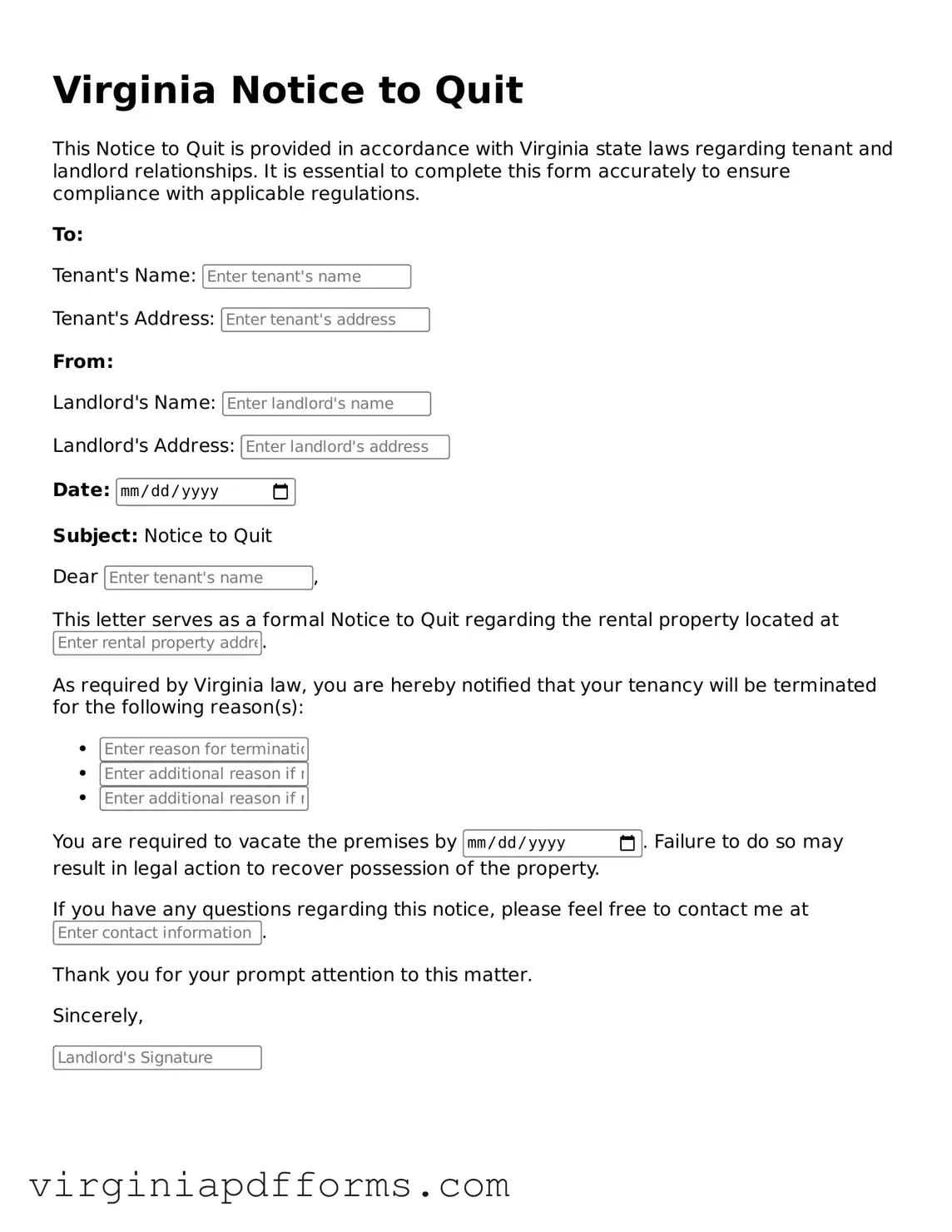Attorney-Approved Virginia Notice to Quit Document
The Virginia Notice to Quit form is a legal document that a landlord uses to inform a tenant that they must vacate the rental property. This notice outlines the reasons for eviction and provides a timeline for the tenant to leave. Understanding this form is crucial for both landlords and tenants to navigate the eviction process smoothly.
Access My Document Now
